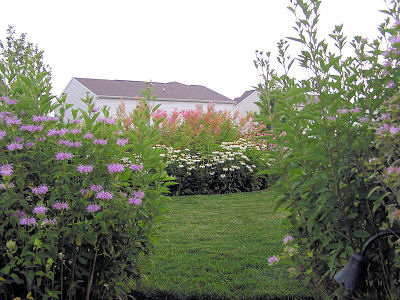Gardening books will tell you to start by analyzing your site: types of soil, patterns of light and shade, moisture levels, and microclimates. Good advice, and there are plenty of resources to help you do that, such as C. Colston Burrell’s A Gardener’s Encyclopedia of Wildflowers (Rodale Press, 1997).
Your Ecosystem
We take you a step beyond site analysis to look at your property as part of an ecosystem, and ask:
- What natural features already exist in your yard? In your neighborhood? In nearby natural areas? Your landscaping may be able to build upon what nature has already provided.
- Does your yard include any native plants? It’s not unusual to find whole neighborhoods planted mostly with trees and shrubs that originated in Europe or Asia. Adding some native plants can begin to restore habitat to sustain a wider range of native fauna, supporting the food chain and the cycle of life.
- What other plants do you have to work with? Gardening with native plants doesn’t mean tearing out all your non-native ornamentals. Many exotics are perfectly well-behaved and mingle well with native plantings.
- What does your site analysis suggest about the type of plant communities that might suit your property: woodland, woods edge, wetland, or grassland? See Native Plant Palettes Each of these suggests natural plant associations that can help you choose what to plant where.
- Can you identify any invasive plants? Some plants installed in landscapes have the potential to do harm to our natural areas and should be removed. If you have invasives on your land, controlling them will be step one in building a healthy ecosystem. Prioritizing Invasive Plant Removal

